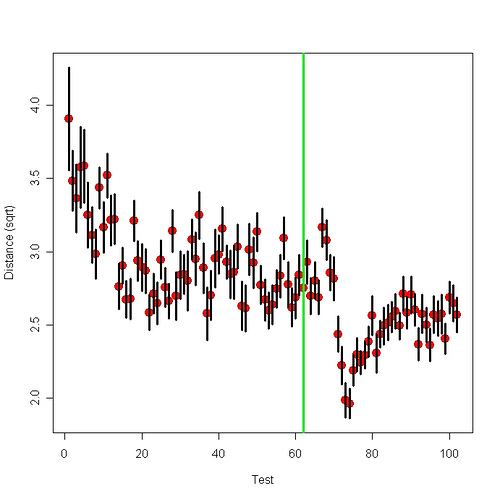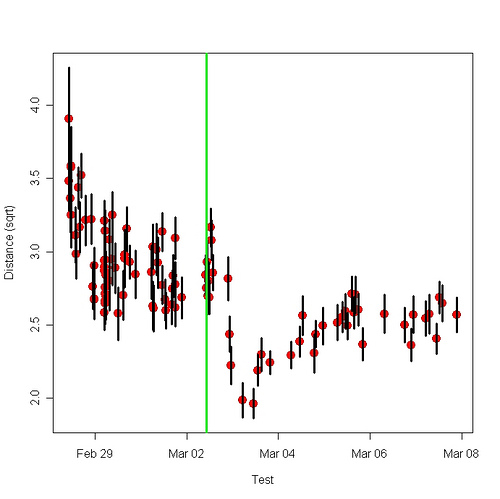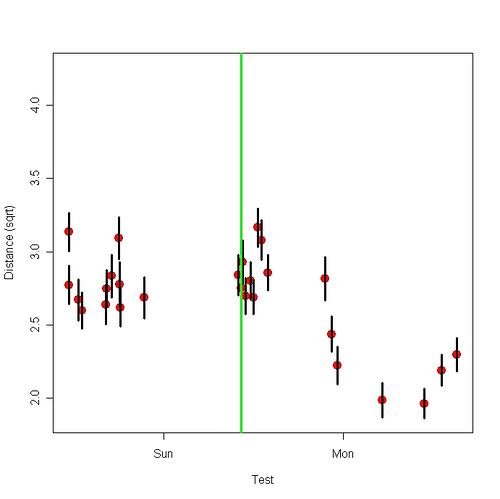The following letter is from a Swedish professor who was president of the European Society of Pediatric Allergy and Clinical Immunology. Background about Ranjit Chandra.
Lerum, March 16th 2008
Dear Prof Roberts,
The correspondence/letters I have found or remembered are as follows.
- In 1993, The European Society of Pediatric Allergy and Immunology, ESPACI) intended to publish a position paper on Cow’s milk allergy(1). In my position as secretary of ESPACI, I wrote that paper in collaboration with the authors listed. We had intense discussions on whether or not we should cite Prof Chandra, whom we all knew, but did not trust, mainly since we found his inclusion criteria and symptoms curious and not according to scientific knowledge at that time. We also opposed, since he had not performed any blinded oral provocation tests and several authors, e.g. Arne Host(2) have found that less than 50 % of those reporting symptoms at exposure had cow’s milk allergy at scheduled blinded oral provocation testing. I wrote a letter to the dean of the university of St John asking whether or not the rumors about Prof Chandra, that his nurse/secretary(?) had produced the results without the involvement of patients, were true. The reply was: “Since the allegations against Prof. Chandra have not been proven or disproven, he is still in office.” I do not find that letter in my files.
- In 1997 Ranjit Chandra published a 5 yrs follow up study on his cow’s milk allergic children(3). This paper included DBPCFC. Then some of my colleagues drew the conclusion that everything was in order.
- In 1998 we published a second position paper together with the European Society on Pediatric Gastroenterology and Nutrition, ESPGAN, on cow’s milk allergy(4). At that time we accepted the Chandra paper, according to point 2.
- In 2003 we were writing up three papers later published in PAI(5-7). These publications were based on papers read during the ESPACI/Section on Pediatrics meeting in Padua, Italy on Dietary prevention of Allergy. Since at that time I was President of ESPACI and Chairman of the Section on Pediatrics within EAACI and organizer of the meeting, I wrote (in collaboration with the speakers) paper I and II and Arne Host and Susanne Halken paper III. Since I was still skeptical of the data by Chandra, I wrote a letter on Feb 15 2003 to the dean of St John’s (enclosed), without any response. The three papers were published in 2004.
- January 19 2006 I wrote once again to St John since I never got any response from the dean, correspondence enclosed.
- On February 16 2006 I got a response from St John from Prof Strawbridge and responded. On February 20 2006 I got another response and again responded to Prof Strawbridge, Dean of St John, enclosed.
- On Feb 24 I got a copy from German Friends and on March 3rd another one from Arne Host on the (enclosed) TV series in CBC on January 29th2006 and later
The rest you know much better than I do.
Actually, I don’t know whether my correspondence has any value on a website. But maybe you can use it for your documentation.
- Businco L, Dreborg S, Einarsson R, Giampietro PG, Host A, Keller KM, et al. Hydrolysed cow’s milk formulae. Allergenicity and use in treatment and prevention. An ESPACI position paper. European Society of Pediatric Allergy and Clinical Immunology. Pediatr Allergy Immunol 1993 Aug;4(3):101-11.
- Host A. Cow’s milk protein allergy and intolerance in infancy. Some clinical, epidemiological and immunological aspects. Pediatr Allergy Immunol 1994;5(5 Suppl):1-36.
- Chandra RK. Five-year follow-up of high-risk infants with family history of allergy who were exclusively breast-fed or fed partial whey hydrolysate, soy, and conventional cow’s milk formulas. J Pediatr Gastroenterol Nutr 1997 Apr;24(4):380-8.
- Host A, Koletzko B, Dreborg S, Muraro A, Wahn U, Aggett P, et al. Dietary products used in infants for treatment and prevention of food allergy. Joint Statement of the European Society for Paediatric Allergology and Clinical Immunology (ESPACI) Committee on Hypoallergenic Formulas and the European Society for Paediatric Gastroenterology, Hepatology and Nutrition (ESPGHAN) Committee on Nutrition. Arch Dis Child 1999 Jul;81(1):80-4.
- Muraro A, Dreborg S, Halken S, Host A, Niggemann B, Aalberse R, et al. Dietary prevention of allergic diseases in infants and small children. Part III: Critical review of published peer-reviewed observational and interventional studies and final recommendations. Pediatr Allergy Immunol 2004 Aug;15(4):291-307.
- Muraro A, Dreborg S, Haken S, Host A, Niggemann B, Aalberse R, et al. Dietary prevention of allergic diseases in infants and small children. Part II. Evaluation of methods in allergy prevention studies and sensitization markers. Definitions and diagnostic criteria of allergic diseases. Pediatr Allergy Immunol 2004 Jun;15(3):196-205.
- Muraro A, Dreborg S, Halken S, Host A, Niggemann B, Aalberse R, et al. Dietary prevention of allergic diseases in infants and small children. Part I: immunologic background and criteria for hypoallergenicity. Pediatr Allergy Immunol 2004 Apr;15(2):103-11.


